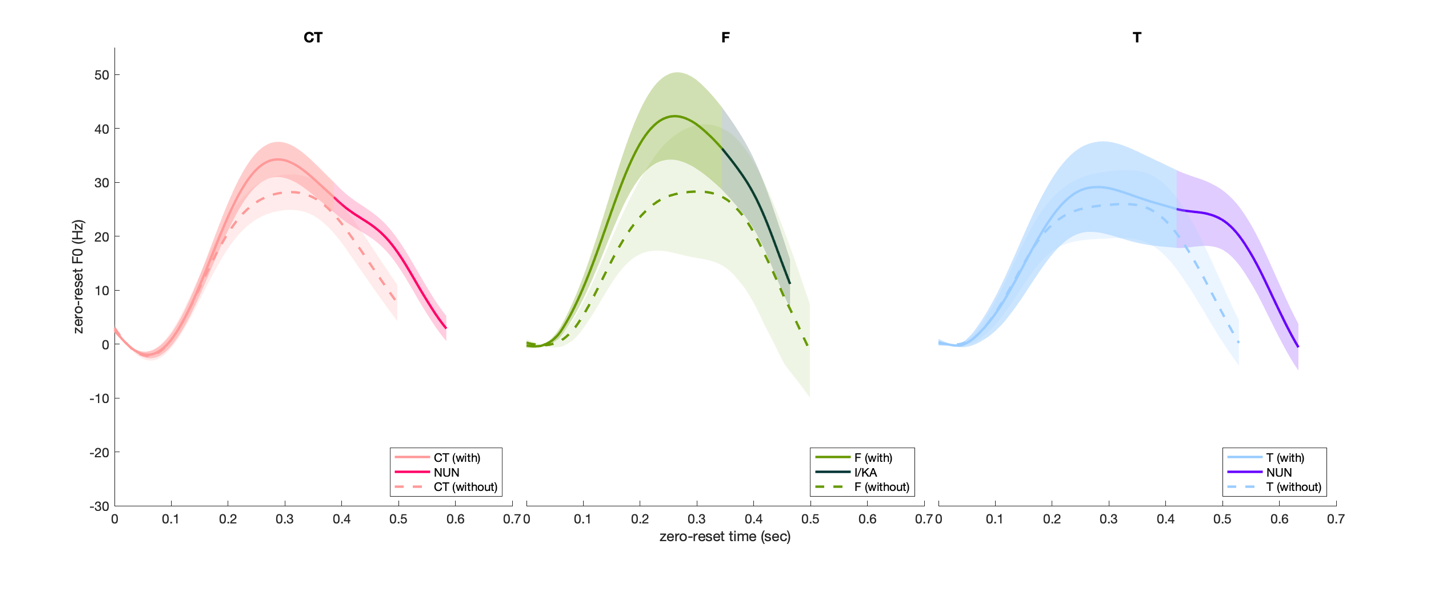This study investigates the prosody of Contrastive Topic (CT) in Korean.
CT is defined as a phrase denoting what the question being addressed is about but at the same time implies other questions about different topics (Constant 2014). According to Lee (2006), CT is marked morphologically and prosodically in Korean: CT is followed by the particle -NUN, which also marks non-contrastive Topic in Korean, and is realized with a high accent ((L)H* or L+H*L-H%).
CT has been discussed in relation to non-contrastive Topic (T) and Focus (F); Lee (2006) argues that Korean CT has a prosodic pattern distinct from T and F. The present study conducted an experiment to examine these observations about CT in Korean. It specifically investigated the prosody of CT not only on the target word, but in the global pitch contour.
The results showed that on the target word, CT is prosodically distinct from both F and T, but showed a bigger difference with F than T. The global pitch contour of CT and F were similar in that both showed peak compression on the following prosodic word (pwd), consistent with Tomioka’s (2010) finding that both CT and F exhibit post-peak compression in Japanese.

